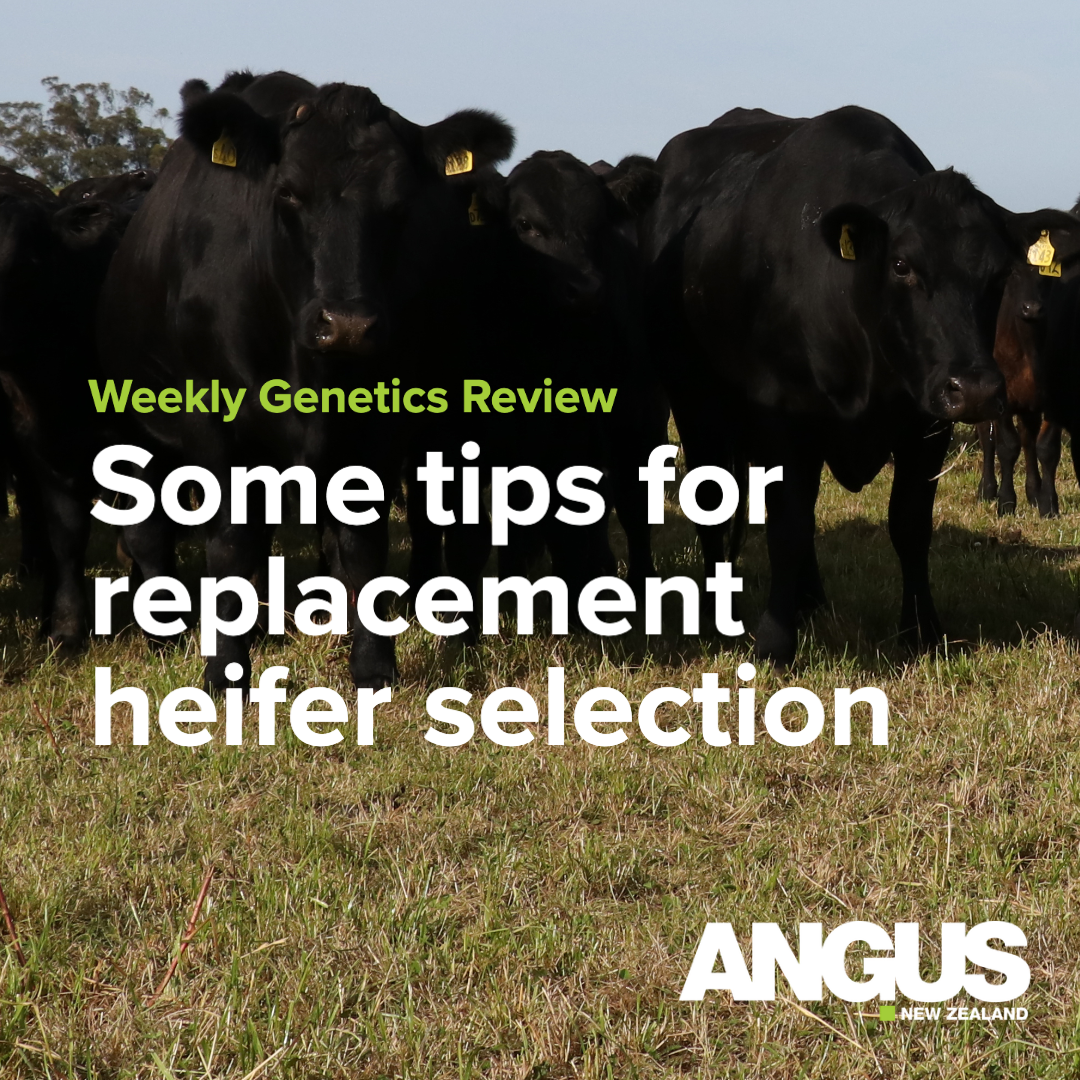Beef Central Genetics editor Alastair Rayner, 08/03/2022
SELECTING the next group of replacement heifers for a breeding program can be one of the most important events on the beef producer’s calendar. The intensity placed on heifers has a direct bearing on the rate of genetic improvement in any herd.
Heifer selection is often a process that is exposed to compromise or is undertaken without clear plans.
The decision to compromise on selection is often made during those occasions when producers are attempting to rebuild or expand numbers. Generally, culling decisions are restricted to only removing animals with significant structural or size differences or for poor temperament.
Many producers, particularly those in more closely managed southern regions, seek to make selection decisions following joining and, in these instances, the decision to retain a heifer is often held-over until first round pregnancy testing. When this occurs, it is often a fairly clear process of culling non-pregnant females and retaining those tested in calf.
This strategy can be a very successful method of heifer selection if it is done in combination with a restricted joining period of six weeks.
Having a restricted joining period places pressure on heifers to conceive, and this will identify those females that are more fertile and more likely to have a lifetime as a successful breeder.
Commencing this joining period six weeks ahead of the main cow herd can also pay dividends. The earlier calving allows the heifer a longer period to recover from calving and increases the opportunity for her to successfully rejoin for a second calf.
Unfortunately, compromises do occur under this system. The most common is to not restrict joining time. While some producers argue that a longer time increases the opportunity to get more calves, the spread across the herd reduces the pressure on fertility, so less fertile heifers may avoid culling.
The results of this often see those later heifers culled as non-pregnant first-calf heifers which can be a huge waste
The additional length impacts on weaning weights, often creating a tail of smaller weaners the following year. In addition, this decision reduces the time available for heifers to recover from calving.
The results of this often see those later heifers culled as non-pregnant first-calf heifers which can be a huge waste. It also exacerbates the cycle as producers have to retain more heifers to replace the non-pregnant first-calf heifers.
Given there are often different approaches to successful heifer selection, however these approaches all share some common traits – these are to have a clear plan, based on specific targets defined around weights or dates.
For producers seeking to build or improve their heifer selection plans, the following points could be useful ahead of this year’s heifer selection program.
- Target joining weight of 65pc of the mature cow weight of the herd. No two cow herds are the same. A target joining weight should be based on the suitability of replacements for the herd in question. This means producers need to weigh and record their mature cow weights, establishing their herd average and the range across the herd. This target should be the goal even when joining a larger group of heifers with the intent to cull after pregnancy testing.
- Look to cull the extremes. There are always two ends to any group. Removing the smaller end of heifers is often an easier decision for producers. The larger end are often more difficult, with many producers often retaining the larger females. The issue in doing so is these females go on to become larger cows that end up as more challenging to manage in the herd.
- Consider heifer age. There is often a tendency in selecting heifers, particularly pre joining, to retain bigger females. Using age records and looking for the older heifers helps identify those born from cows that calved earlier. Selecting these heifers helps keep pressure on fertility within the herd.
- Structure & Temperament. These are two areas which can have a long-term impact on herd performance. Well-structured females, particularly those with adequate width through the pins are more likely to both calve with less or no difficulty as well as remaining in the herd for a longer time. These physical attributes result in greater productivity and higher long term returns for the business.
Record-keeping will underpin many of the decisions made in the yards at selection time.
Well-kept records assist in identifying those heifers that are kept as well as providing a reference on progress towards growth rate and joining weight targets.
Combining good records with practical strategies can help avoid many of the compromises that can occur during selection.

Alastair Rayner is the principal of RaynerAg, an agricultural advisory service based in NSW. RaynerAg is affiliated with BJA Stock & Station Agents. He regularly lists and sell cattle for clients as well attending bull sales to support client purchases. Alastair provides pre-sale selections and classifications for seedstock producers in NSW, Qld and Victoria. He can be contacted here or through his website www.raynerag.com.au


